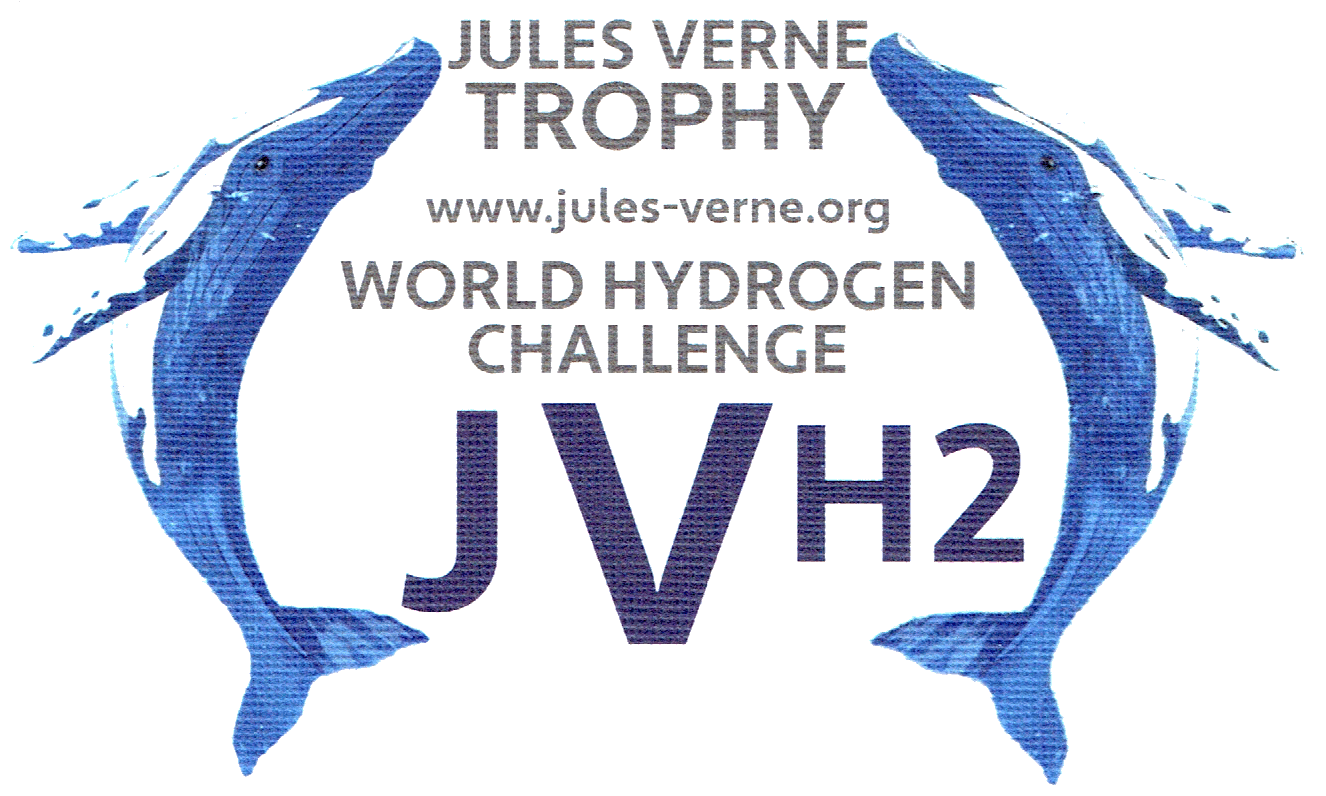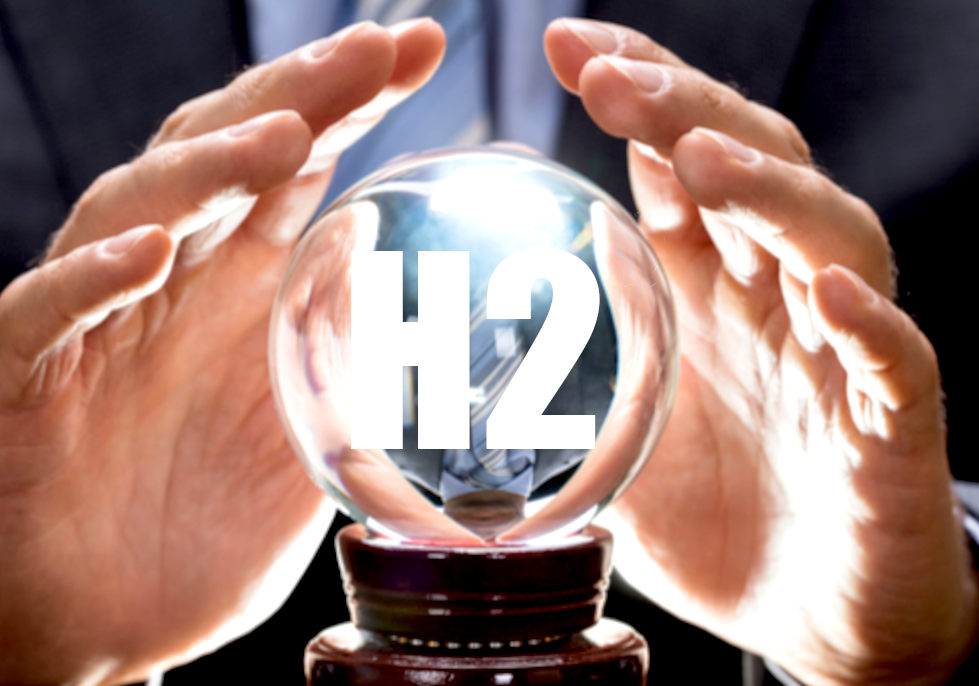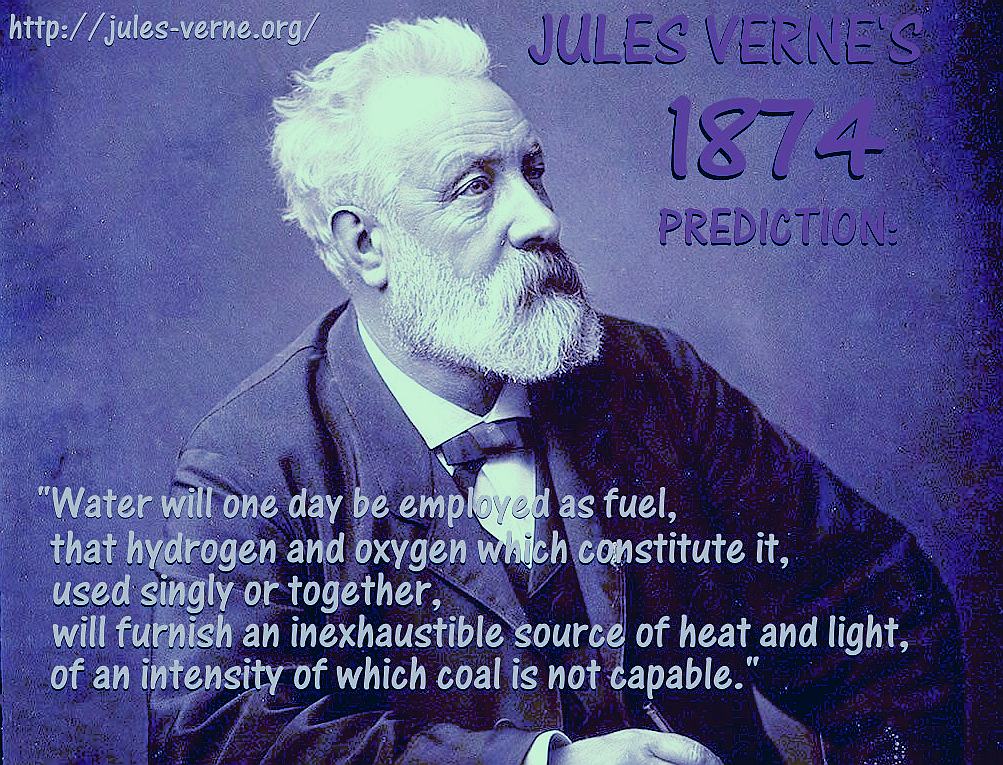|
THE WORLD HYDROGEN CHALLENGE
IN 1874 JULES VERNE PREDICTED HYDROGEN WOULD BE THE FUEL OF THE FUTURE
Please use our A-Z INDEX to navigate this site or return HOME
|
|
|
RACE AGAINST TIME: This could have been another of Jules Verne's titles. But it is not a work of science fiction, it is a man-made problem today that even the master storyteller would have had trouble predicting. Despite our scientists telling us the global warming is at a crucial tipping point, world leaders are allowing the use of fossil fuels to superheat the planet with dire consequences. Jules was adamant that hydrogen would be a source of power for mankind in the future he envisioned. In our view he was bang on the money. Green hydrogen offers us a sustainable future, based on splitting water using electrolyzers, to recombine for heat or electricity. We can use renewable solar and wind power, to create a circular economy, without CO2 and other harmful gases and particulates. This clean energy source can drive our automobiles and ships, as a major brake on climate change. What is holding us back and why? The technology exists today! Given the opportunity, we would like to prove it to you. If it is possible to complete the build of the Elizabeth Swann above by 2024, it will be the 150th anniversary of his prediction in his 1874 book: The Mysterious Island.
|
|
|
|
|
The World Hydrogen Challenge (WHC) is in two parts:
1. The first of what is perceived as a chicken and egg situation, is making the hydrogen molecule in whatever is the appropriate form, available in sufficient quantities via a reliable infrastructure. This is mainly a policy challenge, where political attitudes can either drive, or de-incentivise industry and investors.
2. Developing the vehicles to use the hydrogen based fuels.
Humans have proven to be unreliable at predicting the future. If the past teaches us just one lesson, it is never to trust fortune tellers. Long range forecasts are overwhelmingly wrong. The few that endure, do so invariably through betting on incremental advances of what has proven to be successful. But we live in a world where technology advances exponentially. Or, as Arthur C Clarke put it: “The future is not what it used to be”.
1. THE POLITICAL OR POLICY CHALLENGE
Hydrogen could provide fuel for cars and heavy good vehicles, for example, using Smart Networked service stations. Or for fishing boats, container ships and cruise liners. For all these uses at present there is a perceived lack of infrastructure, especially at ports and harbours. But then, who has ever heard of a hydrogen fishing boat? Or perhaps it is the other way around, fishermen using diesel as fuel, might like the zero emission option, but may not consider such an alternative, because no provision has been made to supply him. Hence, such person has no choice; Hobson's Choice.
It is the classic Chicken and Egg situation, where many people believe that policy makers should step in to kick start the hydrogen energy industry, as they did with the Electricity Lighting Act of 1882, as amended by the Electricity Lighting Act 1888. Electricity being the then replacement to smelly oil lamps and candles that frequently blew out, and subsequent gas lamps, also prone to gusts, limited illumination, and the inconvenience of matches. But that private investors in such infrastructure did not have the assurances they needed as to compensation in the event that their local enterprise should be subsumed, or liable to takeover - so lose their investment - before the amended Act provided such protections, after which local electricity generating installations blossomed, kick starting what is now the Age of Electricity, only one of which local enterprises survives in all the world today, in a little village in Sussex, England.
Should that impediment to supply of hydrogen be resolved by an Act of Parliament, Congress Bill, or similar process in other countries, the other major hurdle is the mass production of Green Hydrogen, via electrolyzers. Such as to be able to supply our local fisherman with the clean fuel he wants. Fortunately, most industrialized countries are now on the case, with Norway looking to provide Green Hydrogen, and Australia looking to provide Brown Hydrogen, to Japan. A small quibble here in that coal is a natural carbon lock, as is wood. Why would any government want to knowingly un-lock carbon from coal, or promote such un-sustainable practice? Has the Kangaroo state not heard of Carbon Capture! In the words of Paul Hogan: 'Wallabies.' Likewise, China is sanctioning coal fired generating stations, contrary to the 2015 Paris Agreement objectives of COP21.
In addition to statute promoting Paris objectives, upping the taxes on fossil fuels, while providing balancing reductions on renewables, even including substantial tax holidays of several years, may induce energy companies to hasten the inevitable transition.
Wind and solar energy cannot be stored in sufficient quantities in ordinary lithium batteries, though many fairly large load levelling installations exist, but that excess energy to grid absorption capacity, can be converted to hydrogen for storage as compressed gas, as a liquid or in combination with nitrogen or carbon dioxide (ammonia or methanol).
2. DEVELOPING THE VEHICLES
In 2022, there are many vessels being developed all over the world designed to use hydrogen fuels as the energy carrier.
At the time of writing, there are no long distance, or high speed vessels running on hydrogen molecules.
Sporting events, such as a race around the world against the clock, help to accelerate new technology. For example, where Formula One or Grand Prix racing is not directly responsible developing engines or other engineering advances for your family car, the advances that give a racing team a win, go forward to be incorporated in ordinary transport. The same is true of the sailing vessels in the Jules Verne Trophee, where lightweight structures benefit production yachts.
We hope that a race against the clock, involving ports as pit stops, will help develop the infrastructure and the vessels. Including speeding up entry and exits from harbours.
In The Mysterious Island, Jules Verne wrote of a world where:
"Water will one day be employed as fuel, that hydrogen and oxygen which constitute it, used singly or together, will furnish an inexhaustible source of heat and light, of an intensity of which coal is not capable."
|
|
|
|
|
|
Please use our A-Z INDEX to navigate this site
This website is Copyright © 2022 Jameson Hunter & Cleaner Ocean Foundation Ltd, equal opportunities companies. This website is carbon friendly, using less energy to load on average per page via simplicity & picture optimization. The same may not apply to third party links.
|



